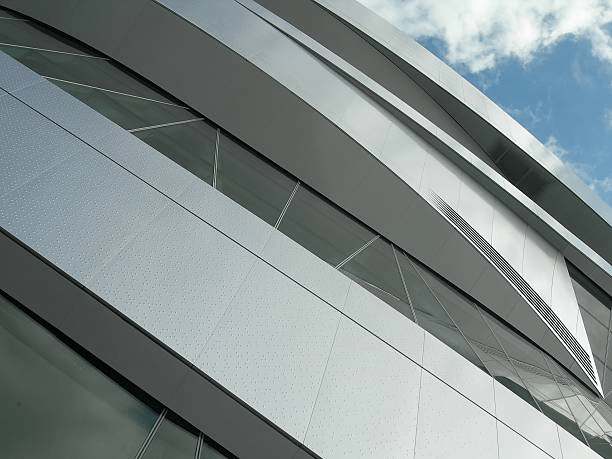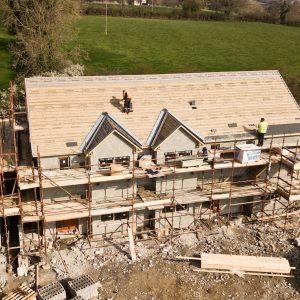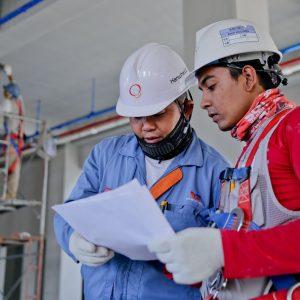In the recent past, the construction industry has made some remarkable architectural innovations. One of these innovations is the establishment of construction materials that are strong and durable. One product of the innovation is the Ultra-High Performance Concrete (UHPC). The following article will discuss the definition and application of Ultra-High Performance Concrete.
The definition of ultra-high performance concrete
Ultra-High Performance Concrete (UHPC) is a popular type of construction concrete. The invention of Ultra-High Performance Concrete happened in the 1980s. It was invented by the US Army Corps of Engineers. It later hit the market in the 1990s, as promoted by a French company named Bouygues.
It helps a construction gain strength and durability, two key must-haves for every construction. It is characterized by its exceptional tensile strength resulting in the erection of strong structures. It increases the durability of a structure maintaining its strength. It contains a compressive strength of at least 17,000 Pounds per Square Inch (PSI).
The Application Of Ultra-High-Performance Concrete
UHPC can be used in different capacities and applied differently to best suit its construction needs. It can be applied as a field cast, poured, overlayed or shotcrete. Its main aim is to provide the needed strength and increase the durability of the structure. Here are some of the common applications of Ultra-High Performance Concrete.
Railway structures
With the advancement of technology and constant innovation in the transport and communication industry, a lot of changes are constantly happening. The railway industry is also not left behind in innovations.
The evolution of trains globally is significant as we adopt new and modern trains. The development of trains directly affects the rail – the path used by trains. We currently have railways crossing over bridges to avoid disruptions. These rail bridges consist of pillars and concrete panels.
Using UHPC ensures the rail bridges are resting on strong concrete pillars and running on high performance concrete panels. The parts making up the railway bridge will corrosion resistant and durable.
Dams & locks
A dam is a barrier built to stop normal water flow for either underground or surface waters. A dam lock is an enclosed waterway chamber that is fitted with watertight gates. It’s meant to raise or lower vessels between two different water levels.
The dams and locks are exposed to water and ships on regular basis. The water movement causes reduced concrete rebar. In return, the dam and locks experience repetitive corrosion. This causes the dams and locks to lose their structural strength. UHPC provide the dam and locks with high durability and strength to withstand water and water pressure.
Marine structures
There are quite a number of marine structures. They include Berthing facilities such as piers and wharves. Also includes dry docking facilities such as marine railway, vertical synchro lifts, graving and floating dry docks.
The coastal protection structures like seawalls, water-breakers, groin structures and jetty structures. These marine structures require immense physical strength and chemical resistance. UHPC has unique properties that protect marine structures from the penetration of harmful chemicals such as chlorides.
Chloride causes corrosion and weakening of the structures. Ultra-High Performance Concrete guarantees longevity and immeasurable strength of marine structures.
Airports
Transport and communication mechanisms have experienced immense growth over time. They have seen the incorporation of new and advanced means of transport such as airplanes. They help move people and goods easily and fast around the globe.
Just as cars have roads and parking, airplanes require airports. These airports need to have the strength to handle airplane movement. Using the UHPC in the building or renovation of airports helps reduce overall wear and tear. It also reduces the maintenance cost of the airport.
Using UHPC in the construction of airports also reduces the time taken to complete the construction.
Treatment plants
Treatment plants are used to purify contaminated substances such as industrial waste. The substances to be purified may be liquid, solids or semi-solids. Treatment plants are exposed to corrosive substances.
Ultra-high performance concrete helps the treatment plants withstand abrasion and corrosion by acids, sulfates and carbonation. One of the key features of UHPC is that it’s impermeable – making it very hard for these substances to penetrate through and cause damage.
Industrial structures
Industries are known to host heavy equipment. The running machine causes heavy trembles and shaking that can weaken the floor. Some industries use or produce harmful chemicals that can cause corrosion when they come into contact with the surface. To ensure the industrial floor is chemical resistant, and strong, UHPC is highly recommended.
In conclusion
Ultra-high performance concrete is characterized by durability, immense strength, resistance to abrasion, and seismic resistance such as earthquakes. It also has a short setting time – because it has low water content. It is homogeneous and uniform – since it consists of small-sized particles. It also helps in reducing the overall construction cost.





